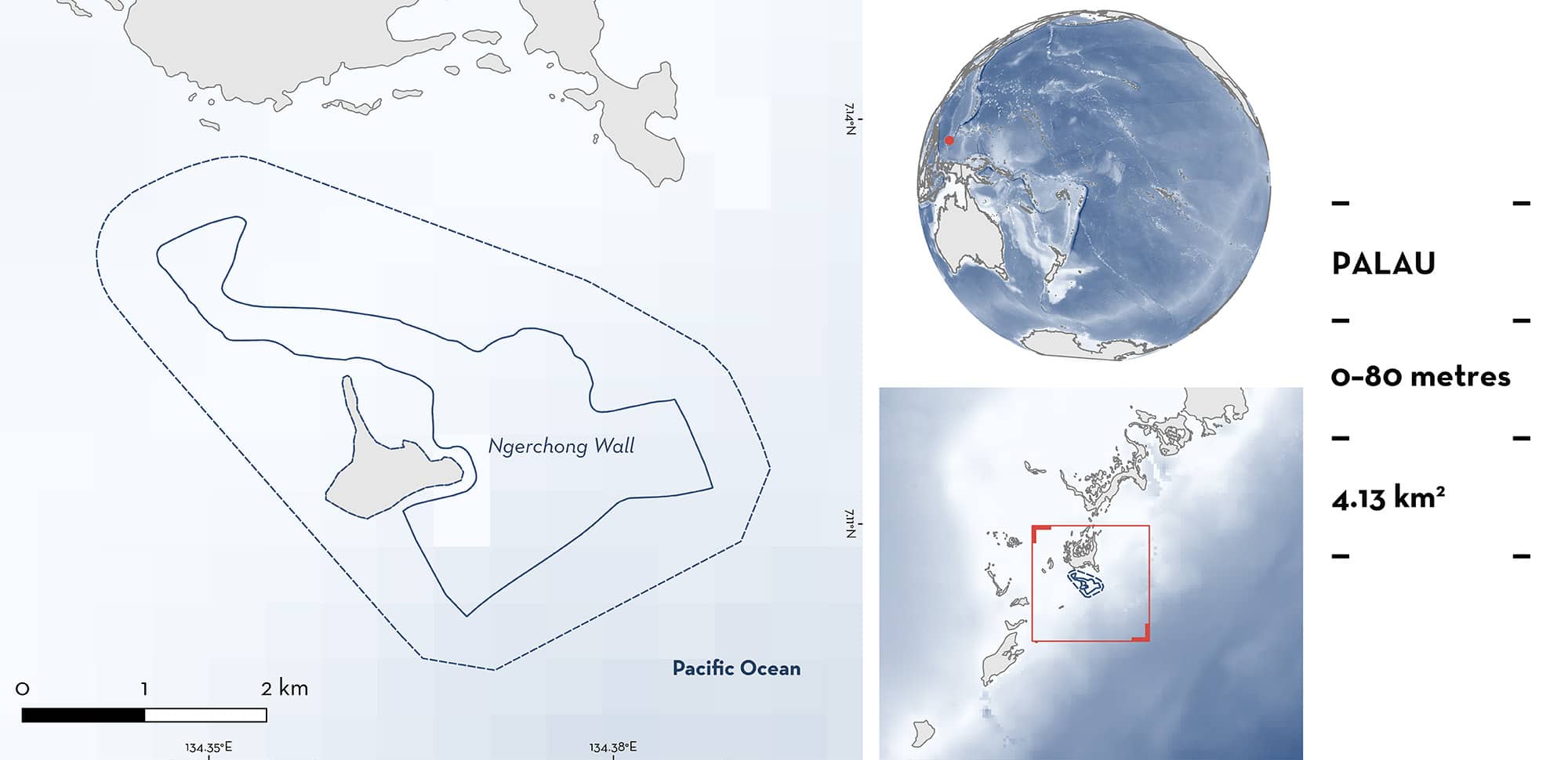ISRA FACTSHEETS
ISRA FACTSHEETS
NEW ZEALAND & PACIFIC ISLANDS REGION
Ngerchong Wall
Summary
Ngerchong Wall is located in Koror, Palau. The area includes Denges Channel, a shallow reef with large coral heads. The area is characterised by a steep slope with crevices, canyons covered with soft and hard corals, and a sandy substrate. Within this area there are: threatened species and undefined aggregations (Grey Reef Shark Carcharhinus amblyrhynchos).
Download factsheet
Ngerchong Wall
DESCRIPTION OF HABITAT
Ngerchong Wall is located in Koror, Palau. The area includes Denges Channel, the major channel in the southeastern lagoon. There is an ~80 m deep basin at the mouth of the channel (Colin 2009). Within the area there is a shallow reef with large coral heads (3–6 m depth), a steep slope with crevices and canyons covered with soft and hard corals (8–40 m), and a sandy substrate (13–31 m) (Harel-Bornovski & Bornovski 2015). The incoming tidal current around Ngerchong Wall flows northward (Harel-Bornovski & Bornovski 2015).
This Important Shark and Ray Area is benthic and pelagic and is delineated from surface waters (0 m) to 80 m based on the bathymetry of the area.
CRITERION A
VULNERABILITY
One Qualifying Species considered threatened with extinction according to the IUCN Red List of Threatened Species regularly occurs in the area. This is the Endangered Grey Reef Shark (Simpfendorfer et al. 2020).
CRITERION C
SUB-CRITERION C5 – UNDEFINED AGGREGATIONS
Ngerchong Wall is an important area for undefined aggregations of one shark species.
Grey Reef Sharks are regularly and predictably (50% of dives in the area) observed in aggregations of 4–20 (up to 50) individuals (T Harel-Bornowski pers. obs. 2009-2024). Aggregations are observed year-round and comprise of adults and juveniles, mostly between 15–40 m depth. The site is visited year-round by recreational divers, mostly opportunistically on days when wind conditions on the western side of Palau are strong and make diving at the most visited sites impossible (T Harel-Bornowski pers. obs. 1998–2024). Grey Reef Shark aggregations are mostly found near the reef drop-off, and occasionally the school of sharks will approach the sandy shallow entrance of Denges Channel (T Harel-Bornowski pers. obs. 2009–2024). Between October 2007 and November 2012, shark counts were collected by dive guides during 67 dives in the area. Grey Reef Sharks were observed in 52 dives ranging from 1–11 (average = 5.74). More than four Grey Reef Sharks were observed in 33 of the 67 dives in the area ranging from 4–11 animals (average = 5.88), supporting personal observations of aggregations (T Harel-Bornowski unpubl. data 2012). Although larger aggregations are regular on the western side of Palau, this area is one of only two areas with regular aggregations of Grey Reef Sharks known on the eastern side of Palau. Strong currents are reported on the reef wall and in the channel of the area (T Harel-Bornowski pers. obs. 1998–2024), with current strength positively correlated with Grey Reef Sharks abundance in other areas of Palau (Vianna et al. 2013). Further information is required to understand the nature and function of this aggregation.
Download factsheet
SUBMIT A REQUEST
ISRA SPATIAL LAYER REQUEST
To make a request to download the ISRA Layer in either a GIS compatible Shapefile (.shp) or Google Earth compatible Keyhole Markup Language Zipped file (.kmz) please complete the following form. We will review your request and send the download details to you. We will endeavor to send you the requested files as soon as we can. However, please note that this is not an automated process, and before requests are responded to, they undergo internal review and authorization. As such, requests normally take 5–10 working days to process.
Should you have questions about the data or process, please do not hesitate to contact us.


